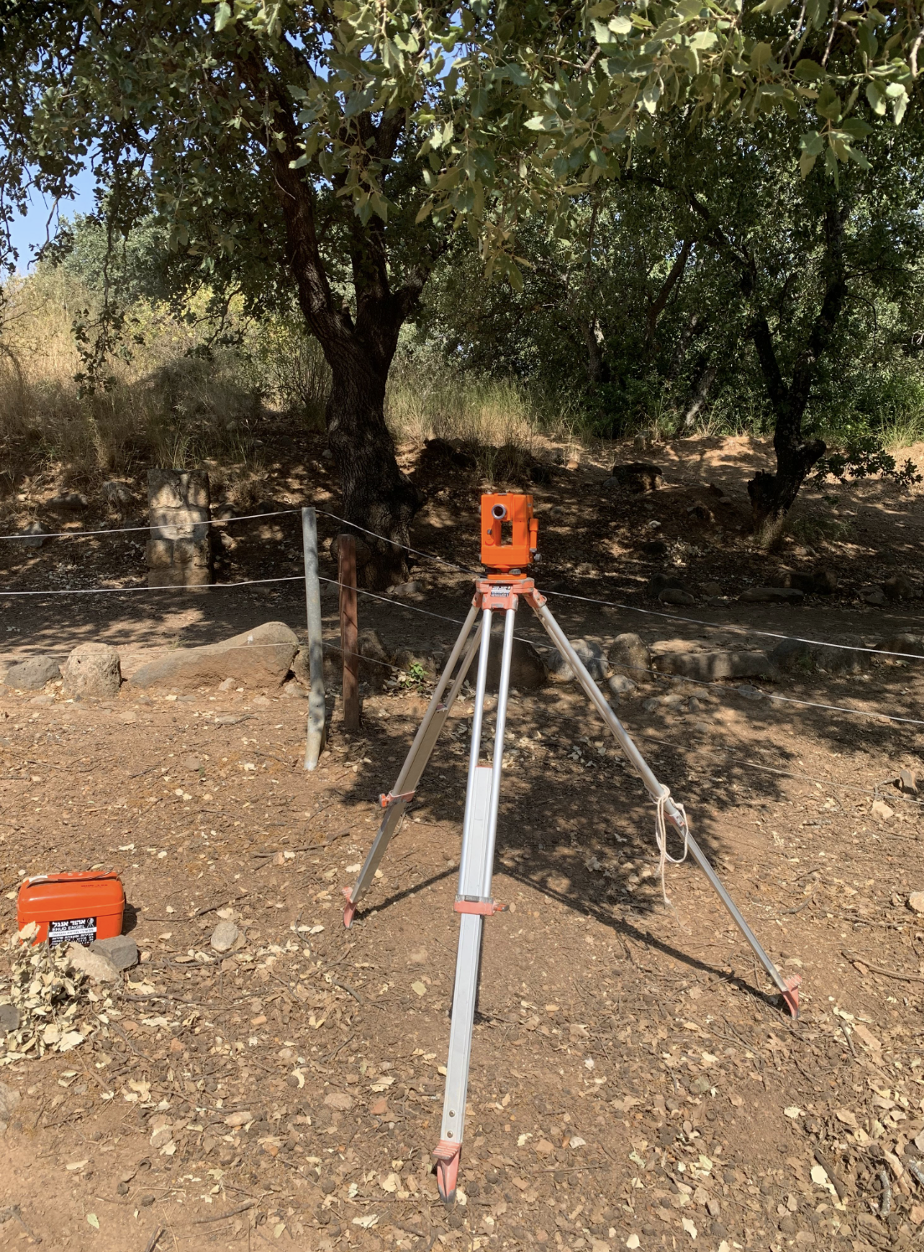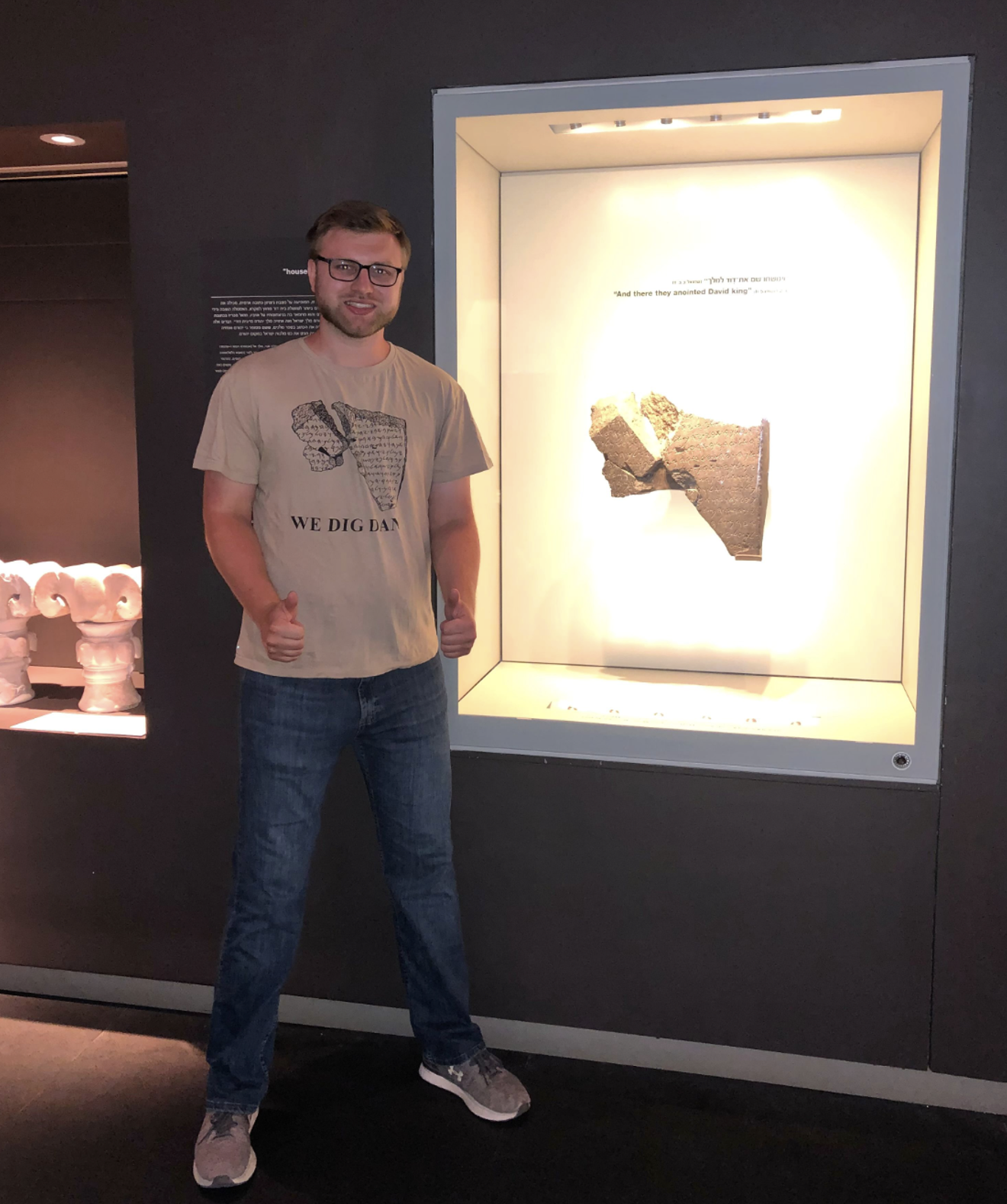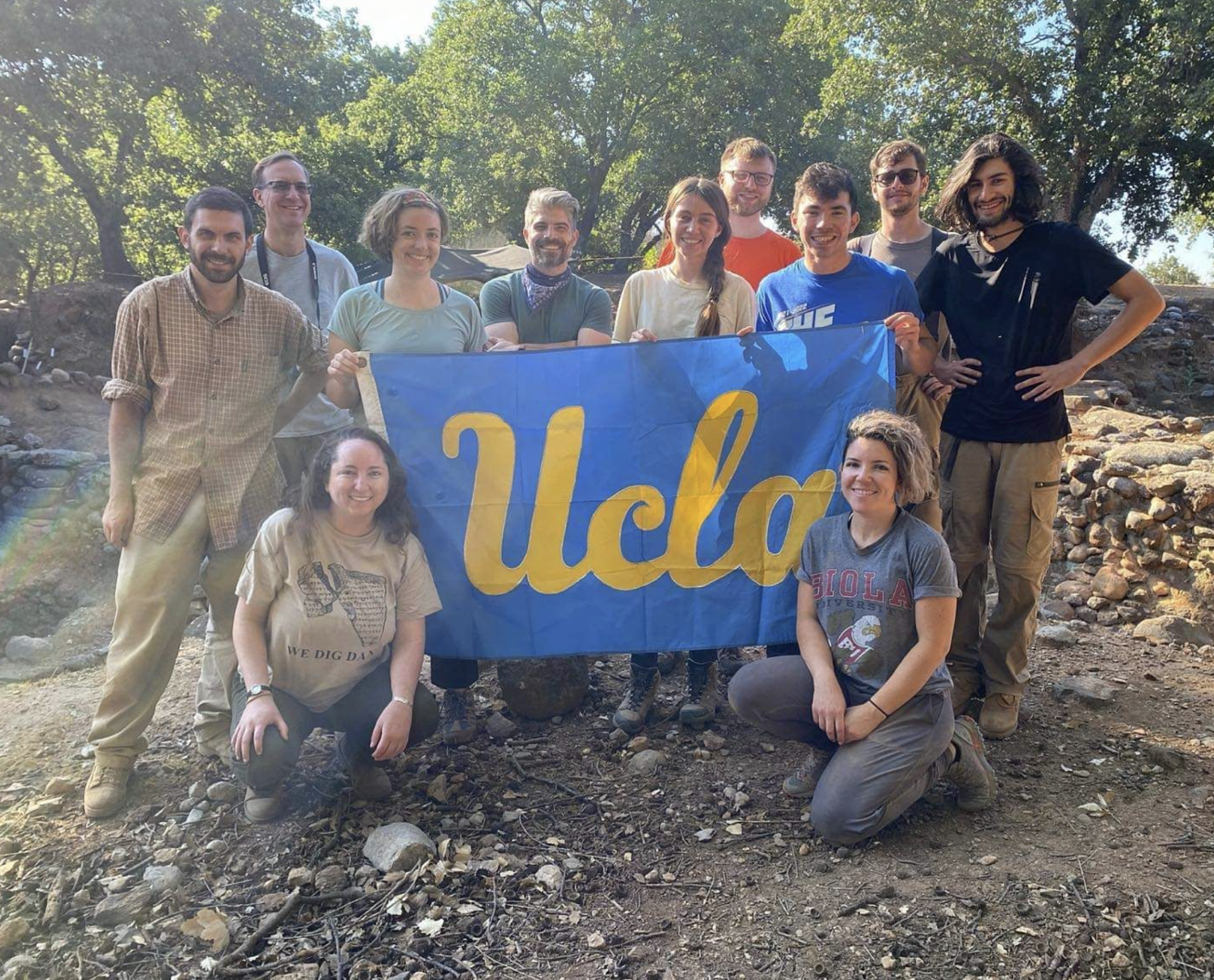
We Dig Dan: Learning Beyond the Classroom
Andrew Bock, 2022 Stevan B. Dana Scholarship Recipient
As a master’s student applying to doctoral programs in Hebrew Bible, I was interested in applying to departments that housed a Levantine archaeologist in order to broaden my understanding of ancient Israelite society and religion beyond the textual evidence. As a doctoral student at UCLA, I have been able to accomplish this goal by participating in seminars on the Late Bronze Age, Iron Age I, Iron Age II, and Archaeology and Collective Identity. Before these courses, I had no exposure to archaeology or site reports and very little exposure to material culture remains. These classes provided a solid foundation for me to understand the types of data with which archaeologists work and the types of questions they ask. Archaeology and material culture, however, cannot be learned by merely reading articles, books, and site reports. Instead, one must get their hands dirty by moving buckets of dirt and creating balks, looking for changes in soil consistency and color, and washing and examining pottery to truly understand archaeology.
This summer I was afforded the opportunity to dig at Tel Dan and see how archaeologists operate in the field. Area B at Tel Dan was my “classroom” for four weeks. There I learned about archaeological methods, how to use different archaeological tools, the value of teamwork and collaboration in archaeology, and how to better understand how archaeologists reconstruct the spaces they are digging through the objects and architecture that is uncovered. While I could write at length about the different aspects of archaeology and material culture that I learned at Tel Dan, but could not have learned in a traditional classroom, I will narrow my description to three activities: taking elevations, flotation practices, and pottery washing and reading.
One of the first days we were at Tel Dan, Dr. David Ilan pulled me aside and showed me how to use the dumpy level. I had to learn how to calibrate the instrument, take the measurement using the level and pole, and how the numbers for the measurements worked to calculate the specific elevations. From that point on, I was tasked with setting up and calibrating the level each morning, determining the height of instrument for the day, taking the majority of the readings with the level, and teaching others in our area to use the level. Understanding how the dumpy level works and correctly operating the level are important skills on an archaeological dig. The dumpy level allowed us to establish the relative heights of objects and loci. These elevations are important because they help us to reconstruct the spatial dimensions of the area and to identify exactly where items were located and where they were found in relation to other objects.
During the third week of the dig, we began to perform flotations in order to recover tiny artifacts and plant remains from soil samples. One of the other volunteers was in charge of the flotation process because flotation analysis is a large part of his thesis, and he taught other volunteers, including myself, how the flotation process functions. Flotation begins by slowly pouring your dirt sample into a larger bucket and mixing it with water. One then slowly pours the water out of the bucket and through a fine netting in order to capture the smallest plant remains. The larger amount of sludge left in the bucket is then sifted more thoroughly by placing netting over a bucket that has the bottom removed in order to capture the larger plant remains. In order to sift these larger remains from the sludge, one must climb into the river that emanates from the spring at Tel Dan and use the force of the current to sift the sludge through the netting. The plant remains that we recovered were bagged and tagged so they can be analyzed by specialists in a laboratory in the coming months. The hope is that these seed remains will allow us to reconstruct the diet of the people who were living in this area of Tel Dan during the Late Bronze Age to Iron Age I transition. By understanding the diets of the people who lived in this area, we may be able to postulate about the collective identity of the group living in this area during this time period.
Pottery sherds are the most commonly found object in an archaeological dig. Each dig season, volunteers procure buckets and buckets of pottery from each square. Thus, identifying and dating pottery is critical for dating the different stratigraphic levels and attempting to interpret the use of specific areas. The importance of pottery sherds means pottery washing and reading (the identification and dating of pottery sherds) is one of the most critical exercises of each dig day. This event happens in the afternoon after digging has concluded for the day and the volunteers and staff have eaten lunch. Everyone sits with a pottery bucket filled with water that has soaked overnight. With a scrub brush, one scrubs away the dirt from each piece of pottery so one is able to see the color of the pottery and any paint, decoration, or inscribed marking that may be left on the pottery. Each pottery bucket is then laid on trays to dry overnight so it can be read the next day. Pottery reading involves separating the diagnostic pieces or pieces that can help one identify what type of object from which the sherd comes (i.e., rims, bases, handles, decorated pieces) in each tray. Participating in pottery reading with archaeologists who are pottery experts helped me learn more about pottery typology and the production of pottery than any articles or books about pottery that I had previously read in seminars.
In sum, the hands-on learning at Tel Dan helped me better understand the concepts I learned in my archaeology seminars (especially pottery typology!), the tools and methods used on archaeological digs, and how archaeologists make decisions in real time about what they are finding. Overall, I learned many things about archaeology and archaeological methods while on the dig that I never could have learned in the classroom.
As a final note, I would like to thank the generous donations of Stevan B. Dana who made this extremely educational trip possible for me. With his support, I had the opportunity to excavate at Tel Dan for the 2022 dig season. I would also like to thank Professors Aaron Burke and David Ilan for being so patient with me as a first-time volunteer—your guidance and support this season was invaluable and immensely encouraging.
Andrew Bock is a doctoral student in the Near Eastern Languages and Cultures (NELC) department at the University of California, Los Angeles (UCLA) who specializes in the Hebrew Bible and Northwest Semitic inscriptions. His research interests include prophetic literature and phenomenon in the ancient Near East, scribal revision techniques in the Hebrew Bible and Akkadian literature, Ugarit, and the intersection of material culture and textual evidence.
American Society of Overseas Research
The James F. Strange Center
209 Commerce Street
Alexandria, VA 22314
E-mail: info@asor.org
© 2023 ASOR
All rights reserved.
Images licensed under a Creative Commons Attribution-NonCommercial-ShareAlike 4.0 International License
COVID-19 Update: Please consider making payments or gifts on our secure Online Portal. Please e-mail info@asor.org if you have questions or need help.



